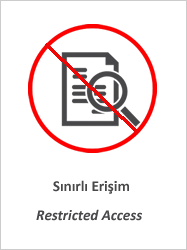Model-based Microstrip Antenna Design
Citation
Yigit, H. and K. Karayahsi. 2021. "Model-Based Microstrip Antenna Design.". doi:10.1109/PIERS53385.2021.9694697Abstract
This paper aims to reduce the design cost and streamline the design processes for microstrip antennas by using a model-based antenna design technique that explains the behavior of the system more simply by describing the behavior of the elements in a system and the interactions between these elements for the process of antenna design phase that begins from the idea stage to the production stage. This technique proposes to create two models called employer and employee models for antenna design processes. The employer model organizes the design process by keeping the limitations and freedoms of the antenna's parameters, while the employee model uses graph theory and machine learning to define antenna parameters and interactions between parameters by creating a dynamic model. In this paper, this concept is applied to rectangular microstrip antennas. The cavity model performs preliminary design optimization on the rectangular microstrip antenna's far region electric field radiation patterns (E and H planes) on the width and length parameters. For various rectangular antennas, it is demonstrated that the width and length suggested by the method supply the intended radiation parameters that agree with simulations made with pre-existing simulation software. Thus, the pre-optimization technique that is quick, easy to comprehend, and apply is obtained that supplies the desired radiation pattern. Using this technique aims to minimize the number of design trials by explaining the freedoms and limitations regarding the antenna with the employer model by checking the compatibility of the antenna with the employer model during the design.


















